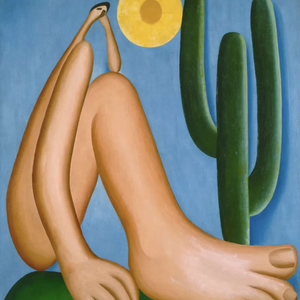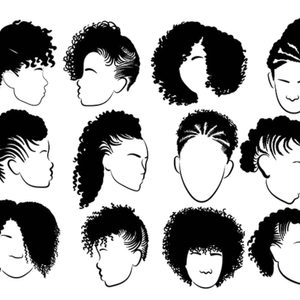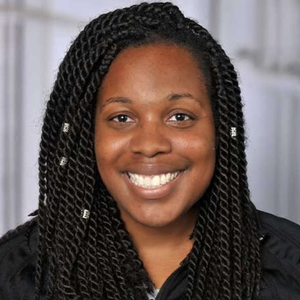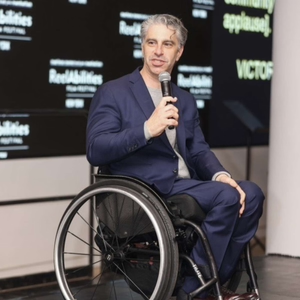
OT JEDI
Suzanne Rappaport
OT JEDI recognizes the present social injustices and racism that still exist within our nation, and embrace the rich perspectives and experiences that arise from racial, ethnic, socio-economic, sexual, gender and religious diversity within our health care community.The goal of OT JEDI is to empower our listeners in order to recognize barriers with our occupational therapy experiences that may be caused by social injustice, inequality, and racial trauma. We are committed to building opportunities for learning, growth, and accountability.
All episodes
Best episodes
Seasons
Top 10 OT JEDI Episodes
Goodpods has curated a list of the 10 best OT JEDI episodes, ranked by the number of listens and likes each episode have garnered from our listeners. If you are listening to OT JEDI for the first time, there's no better place to start than with one of these standout episodes. If you are a fan of the show, vote for your favorite OT JEDI episode by adding your comments to the episode page.

01/31/23 • 52 min
Dr. Ana Malfitano’s career is focused on Social Occupational Therapy, which has been developed in Brazil to repair various inequities and injustices. In Dr. Malfitano’s World Federation of Occupational Therapy 2022 Keynote address, she turns the lens of occupational therapy onto the idea of anthropophagy. This concept was developed in The Manifesto Anthropophagic, by Oswald de Andrade, which proposes that metacognitive knowledge stems from alterity. In a world where we coexist with many other cultures—understanding the “other” and consuming this knowledge, builds new understanding. In this discussion of anthropophagy and its application in social occupational therapy, we question the construction of our therapeutic position and purpose. Today’s world is fraught with relentless social inequalities and rather than cancel the colonial origins, perhaps recognition of the plurality of our histories & cultures, and questioning our actions will unite us in working towards a social life.
Image: Abaporu, 1928 by Tarsila do Amaral

Episode 1: Hair Equity
OT JEDI
08/05/22 • 43 min
This episode we will discuss and learn about hair equity. Hairstyles have cultural roots. It can be easy to dismiss and think, “Well, it’s just hair.”
When people spend time in hospitals, they often experience disruptions in their normal routines and engagement in the activities of daily living or ADLs. I talked with two professionals, Lauren Justice an OT and Kim Regis, who is the Vice President of operations at Nationwide children’s hospital in Columbus Ohio. They formed a hair equity initiative and launched a program to that increased staff awareness and education, as well as, taking stock on current hair supply inventory. Their work is not only an example of occupational justice with focus on equal access to grooming but also a paragon of what can be accomplished on multidisciplinary teams.
Click here for more information on the hair equity programs at Nationwide Children's Hospital
Some common hairstyle vocabulary:
Box braids are a stye of hair-braiding. This type of hairstyle is a "protective style" (which means it is a style which can be worn for a long period of time to let natural hair grow and protect the ends of the hair) and is used as a way to protect textured hair against split ends and damage from heat and humidity. It is considered "boxy" because of square-shaped hair divisions.
A do-rag is a scarf or cloth worn on the head, typically with its ends or corners tied together in the back. It dates back to the 19th century when poor laborers and slaves needed something to tie their hair back with. Later during the Harlem Renaissance and Great Depression, in the 1930s, do-rag evolved into a hairstyle preserver.
There are two types of lace fronts, a full lace wig and a lace front wig is the base. The difference is in the name, lace front wigs contain lace in the front of the wig. It is attached to the front edges of the head, along the hairline where there is often a lace panel. Full lace wigs are pasted to the head entirely, they tend to have a slightly stronger durability.
A sew-in is a hair extensions made up of small cornrow braids that are used as anchors then attached with hair wefts by use of needle and weaving thread.
A silk press is a method of straightening natural curls without a chemical relaxer. Instead, this hairstyling technique uses a blow-dryer and flat iron to smooth out the hair.
A quick weave is a style where extensions are glued to a protective wig cap before bonding it to the head. It's a protective style that can be done at home.

08/31/23 • 46 min
Occupational therapy can provide services in many different areas within the prison system. From providing transitional services to inmates getting ready to be released, to focusing on occupational deprivation, to leading groups for an infinite number of topics. This episode features Ariana Gonzalez, an occupational therapist, executive director, and founder of Life After Incarceration: Transition & Reentry (LAITR), an occupational therapy community-based program focused on reentry for individuals after incarceration.
To learn more about Ariana Gonzalez and LAITR visit https://www.lifeafterincarceration.com/
References
Criminal justice data. The Sentencing Project. (2023, January 25). Retrieved July 29, 2023, from https://www.sentencingproject.org/research/us-criminal-justice-data/
Dillon, M. B., Dillon, T. H., Griffiths, T., Prusnek, L., & Tippie, M. (2020). The distinct value of occupational therapy in corrections: Implementation of a life skills program in a county jail. Annals of International Occupational Therapy, 3(4), 185. https://doi.org/10.3928/24761222-20200309-01
Gonzalez, A., & Tyminski, Q. (2020). Sleep deprivation in an American homeless population. Sleep Health: Journal of the National Sleep Foundation, 6(4), 489–494. https://doi.org/10.1016/j.sleh.2020.01.002
Jaegers, L. A., Dieleman, C., Dillon, M. B., Rogers, S., Muñoz, J. P., & Barney, K. F. (2020). Justice-based occupational therapy initiative: Advancing occupational justice in criminal justice systems. Annals of International Occupational Therapy, 3(4), 200+. https://link.gale.com/apps/doc/A676585517/AONE?u=mlin_m_regis&sid=ebsco&xid=ed5dd4db
Muñoz, J. P., Moreton, E. M., & Sitterly, A. M. (2016). The scope of practice of occupational therapy in U.S. criminal justice settings. Occupational Therapy International, 23(3), 241–254. https://doi.org/10.1002/oti.1427
Tucker, S. (2020). Access to OT in the prison system: Assessing attitudes of OT students and practitioners...2020 American occupational therapy association annual conference & expo. American Journal of Occupational Therapy, 74(Sup1), 1. https://doi.org/10.5014/ajot.2020.74S1-PO1510
Tyminski, Q., Gonzalez, A., & Synovec, C. E. (2020). The importance of health management and maintenance occupations while homeless: A case study. Work, 65(2), 297–301. https://doi.org/10.3233/WOR-203081
Special thanks to Parker Sheridan for the background research!

10/27/22 • 32 min
In the United States the profession of occupational therapy was established in 1917 and in the UK it was established in 1922 but in Arab countries, like Jordan, Morocco, Saudi Arabia, Lebanon, Palestine, Kuwait, and others, occupational therapy was established less than 40 years ago. And most Arab countries saw the establishment of occupational therapy within the last 25 years.
Of course, as the profession grew in Arab nations, theories, and models were brought in from Western countries that emphasized practices that had been developed in very different contexts. These ideas about human occupation and its connection to health and wellness had to be translated and made to fit into the Arab culture. These theories and models stem from the well-educated, privileged social positions, able-bodied, white Anglophones, who identify with Judeo-Christian cultural backgrounds.
When Dr. Razan Hamed was studying occupational therapy at the University of Jordan, she noticed that some occupational therapy evaluations were missing some important aspects of Muslim life while holding onto items that were irrelevant in Jordan. She set her sights on the Performance Assessment of Self-Care Skills or PASS and created the A-PASS, the Arabic Performance Assessment of Self-Care Skills

OT JEDI Season 3 Trailer
OT JEDI
11/01/24 • 3 min
Hello, OT JEDI listeners! As we approach the 2024 election, it’s a perfect time to reflect on the enduring importance of justice, diversity, equity, and inclusion—our JEDI principles. Since 2020, there’s been a powerful call for justice and equity that has resonated across communities, professions, and industries. But as new challenges arise, we need to keep JEDI values central in all that we do.
I'm speaking to you now as the new Program Director of SUNY Downstate’s Post-Professional Occupational Therapy Doctorate (PP-OTD) program, where diversity and inclusion are integral. The faculty and student diversity at SUNY Downstate is essential, and I'm actively fostering this by building an inclusive, accessible, and representative program. To support practicing professionals, I've introduced a credit-for-prior-learning initiative, waiving up to 9 credits, saving students close to $10,000—a step toward making higher education more equitable.
Amid this transition, I’m thrilled to bring back OT JEDI with Season 3, focusing on sustaining and amplifying the JEDI movement. Let’s continue advancing these values together, in every sphere of life. Stay tuned for new episodes soon, and thank you for being part of this journey toward a more inclusive future.

04/01/25 • 36 min
In this episode, our guest, Karen Jacobs, explores the role of AI in occupational therapy—from streamlining documentation and facilitating communication through translation to addressing health disparities while considering ethical implications. She discusses AI’s potential in assessment, intervention, client engagement, and its ability to make OT education more equitable.
Referenes
Alowais, S. A., Alghamdi, S. S., Alsuhebany, N., & et al. (2023). Revolutionizing healthcare: The role of artificial intelligence in clinical practice. BMC Medical Education, 23, 689. https://doi.org/10.1186/s12909-023-04698-z
Çela, E., Fonkam, M. M., & Potluri, R. M. (2024). Risks of AI-Assisted Learning on Student Critical Thinking: A Case Study of Albania. International Journal of Risk and Contingency Management (IJRCM), 12(1), 1-19. https://doi.org/10.4018/IJRCM.350185
Gandhi, T. K., Classen, D., Sinsky, C. A., Rhew, D. C., Vande Garde, N., Roberts, A., & Federico, F. (2023). How can artificial intelligence decrease cognitive and work burden for frontline practitioners? JAMIA Open, 6(3), ooad079. https://doi.org/10.1093/jamiaopen/ooad079
Mansour, T., & Wong, J. (2024). Enhancing fieldwork readiness in occupational therapy students with generative AI. Frontiers in medicine, 11, 1485325. https://doi.org/10.3389/fmed.2024.1485325
Montenegro-Rueda, M., Fernández-Cerero, J., Fernández-Batanero, J. M., & López-Meneses, E. (2023). Impact of the Implementation of ChatGPT in Education: A Systematic Review. Computers, 12(8), 153. https://doi.org/10.3390/computers12080153
Nilsen, P., Sundemo, D., Heintz, F., Neher, M., Nygren, J., Svedberg, P., & Petersson, L. (2024). Towards evidence-based practice 2.0: Leveraging artificial intelligence in healthcare. Frontiers in Health Services, 4. https://doi.org/10.3389/frhs.2024.1368030
Vahedifard, F., Sadeghniiat Haghighi, A., Dave, T., Tolouei, M., & Hoshyar Zare, F. (2023). Practical use of ChatGPT in psychiatry for treatment plan and psychoeducation. arXiv preprint arXiv:2311.09131. https://doi.org/10.48550/arXiv.2311.09131
Zhai, C., Wibowo, S., & Li, L. D. (2024). The effects of over-reliance on AI dialogue systems on students' cognitive abilities: A systematic review. Smart Learning Environments, 11, 28. https://doi.org/10.1186/s40561-024-00316-7

12/02/24 • 63 min
Last season in episode 5, we explored the history of Black occupational therapists with guest speaker Toni Solaru. She spoke of systemic barriers in legal, governmental, and educational contexts. Highlights included Lela A. Llorens' 1969 Slagle Lecture, the only one by a person of color, and discussions on initiatives like AOTA's 1988 minority recruitment study, the founding of COTAD and BLM in the 2010s, and the addition of DEI as a pillar in Vision 2025. Despite these efforts, AOTA's inconsistent support for BIPOC and individuals with disabilities remains a concern. The discussion also addressed the lack of education on BIPOC history in OT and whether it’s fair to expect BIPOC faculty to take on this responsibility. Lastly, we critiqued how many JEDI and DEI initiatives have been performative and noted their decline in prominence by 2024.
We reconnect with Dr. Solaru to discuss the impactful work of Diverse OT National and the programs they support. She also highlights key initiatives such as Disrupt OT and the Unconference, emphasizing actionable steps and the importance of staying vigilant and informed in advancing equity within the profession.
References and Resources
https://www.blackbeyondthebinarycollective.org/
https://us.jkp.com/products/occupational-therapy-disruptors
https://givebutter.com/DiverseOT
https://www.commonnotions.org/everything-for-everyone?srsltid=AfmBOorVhJCZeHS2ze5KDe5XBWjfCZZx5xWQHXsl9VUunnUdt3oU88Ri
Interested in joining the book club?
- Reading for the Revolution, first meeting is January 22, 2025 from 6-8:30 PM CST, 2.5 CE/PDUs credits available. FREE event.
- Advocacy in Action #1: Where Are All the Black OTs? The first meeting is February 1, 2025, from 9 a.m. to 1 p.m. CST. Four CEs/PDUs are available. A $50 suggested donation is suggested. Use code ACCESS4ALL for free registration. All funds go to supporting DOT operations.
What We Owe Each Other - References
Davis, A. Y. (2022). Freedom is a constant struggle (F. Barat, Ed.). Penguin Books Ltd.
Gates, H.L. (2016, Nov 9). Black America since MLK: And still I rise, black panthers [Video]. Youtube. https://www.youtube.com/watch?v=i_E8O8rlnoo&list=PL8DMaz5ynUE269cN892SpNPiBSESfbd70&index=12&ab_channel=HenryLouisGates%2CJr.
hooks, b. (2018). All About Love: New Visions . HarperCollins.
King, M. L., Jr. (2018). Letter from Birmingham Jail. Penguin Classics.
Peck M. S. (1998). The different drum : community making and peace (2nd Touchstone). Simon and Schuster.
TRT. (2021, Jun 16). Deep dive: A history of Black-Palestinian solidarity [Video]. Youtube. https://www.youtube.com/watch?v=HAl5YrNQHWs&ab_channel=TRTWorld

Where are all the Black OTs?
OT JEDI
06/01/23 • 59 min
Toni Solaru OT, OTD, OTR talks about the unknown history of occupational therapy. Dr. Solaru is a community-based mental health OT and the co-founder and Chair of Diverse-OT National, an organization dedicated to advancing the cultural climate within the OT profession and strives to create a community of critically reflexive OT(A)s and students.
To follow Diverse-OT National on Instagram - https://www.instagram.com/diverseot_national/?hl=en
To access the full interview on YouTube – https://youtu.be/Au8sreLe8IE
References
American Occupational Therapy Association. (1953, November). Report of the Subcommittee on Schools and Curriculum. (Available from the Wilma L. West Library, 4720 Montgomery Lane, Bethesda, Maryland 20814)
Black, R. M. (2002). Occupational therapy’s dance with diversity. American Journal of Occupational Therapy, 56, 140–148.
Black History Milestones. (2019). LifeHistory.com. Retrieved from https://www.history.com /topics/black-history/black-history-milestones
Bolden, J. A. (1993). Differential occupational outcomes among African American and white women in female-dominated professions: The case of occupational therapy. Unpublished doctoral dissertation, Boston University.
Robinson, L. (2000). The Black occupational therapy caucus: The first 25 Years. Black Occupational Therapy Caucus.
Skyberg, R., Grubb, Rachel. (2019). Evolution of occupational therapy practice: Life history of Lela Llorens, Ph.D., OTR/Ret, FAOTA.. Oral History Student Papers. 54.
Wells, S. A., & Whiting, F. (1998, March). A celebration of diversity: Reviewing AOTA’s progress toward creating a more diverse profession. OT Practice, 2, 31–34.
http://www.otcentennial.org/
https://www.cleveland.com/news/2022/10/ex-cleveland-schools-therapist-who-rioted-at-us-capitol-on-jan-6-seeks-mercy-from-court.html

04/30/23 • 35 min
Victor Calise has had a diverse career path—he has gone from plumber to Paralympian to Policymaker. He competed in sled hockey in the 1998 Paralympics in Nagano, Japan. He worked for the NYC Department of Parks and Recreation. He was appointed the Commissioner of the Mayor's Office for People with Disabilities by Mayor Michael Bloomberg, and then reappointed by Mayor Bill De Blasio, and reappointed again by Mayor Eric Adams. He recently took on a new role as Director of Global Culture, Diversity, Equity and Inclusion at Walmart’s newly formed Accessibility Center of Excellence.
Here are some additional links for the accessible accomplishments in NYC - Accessible NYC and Judy Heumann's #ManCrushMonday about Victor Calise.

03/31/23 • 43 min
As occupational therapy practitioners, we understand disability within the context of diversity, equity, and inclusion. In this two-part episode, occupational therapy student Meaghan Lawrence discusses the program, Empower Spinal Cord Injury (SCI) which supports individuals who have had an injury to their spinal cord. In the traditional rehabilitation model in the United States, rehabilitation stops a few months after injury. Often after discharge is when true rehabilitation needs to occur because the initial shock and comorbid conditions have diminished. Through Empower SCI, the participants have the opportunity to take part in a more meaningful rehabilitation.
Special Thanks to Meaghan Lawrence for writing and interviewing and special thanks to Michael Manhardt for sharing the Empower SCI story.
For more information about Empower SCI, please visit their website.
Show more best episodes

Show more best episodes
FAQ
How many episodes does OT JEDI have?
OT JEDI currently has 19 episodes available.
What topics does OT JEDI cover?
The podcast is about Health Care, Equity, Inclusion, Podcasts, Education, Social Sciences, Science and Diversity.
What is the most popular episode on OT JEDI?
The episode title 'Where are all the Black OTs?' is the most popular.
What is the average episode length on OT JEDI?
The average episode length on OT JEDI is 37 minutes.
How often are episodes of OT JEDI released?
Episodes of OT JEDI are typically released every 31 days, 1 hour.
When was the first episode of OT JEDI?
The first episode of OT JEDI was released on Apr 8, 2022.
Show more FAQ

Show more FAQ